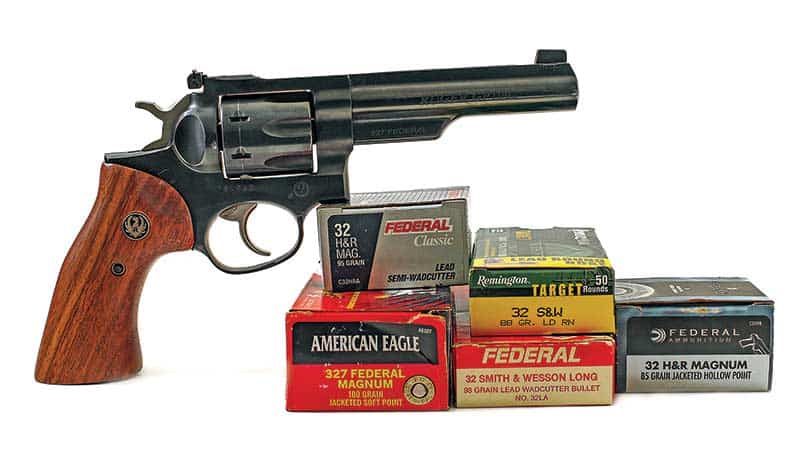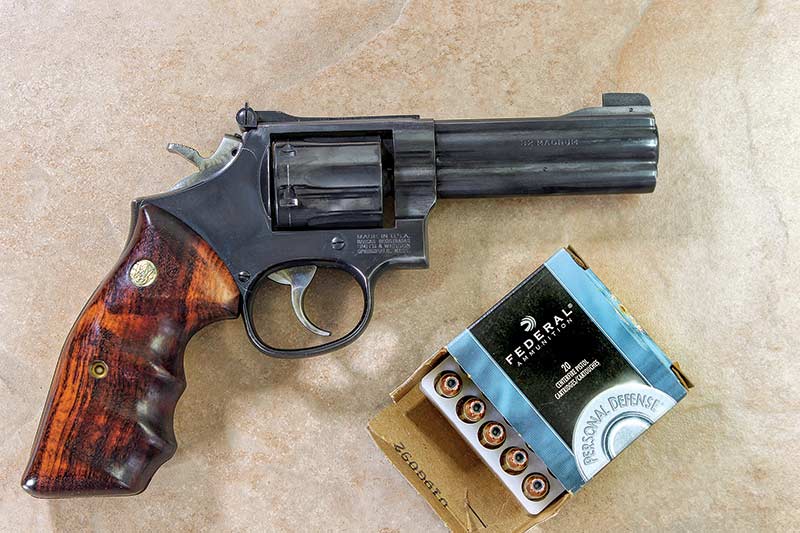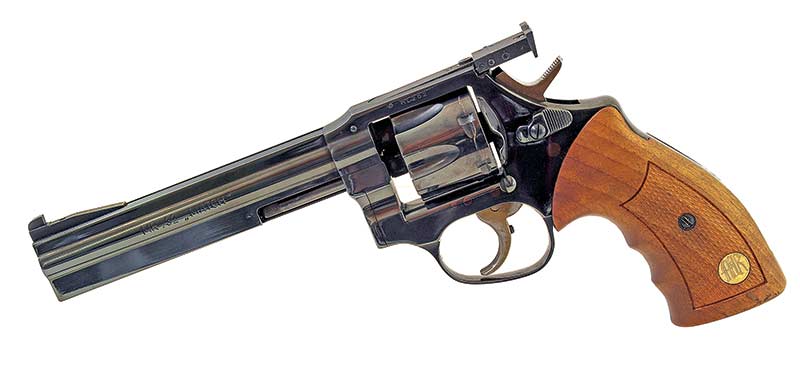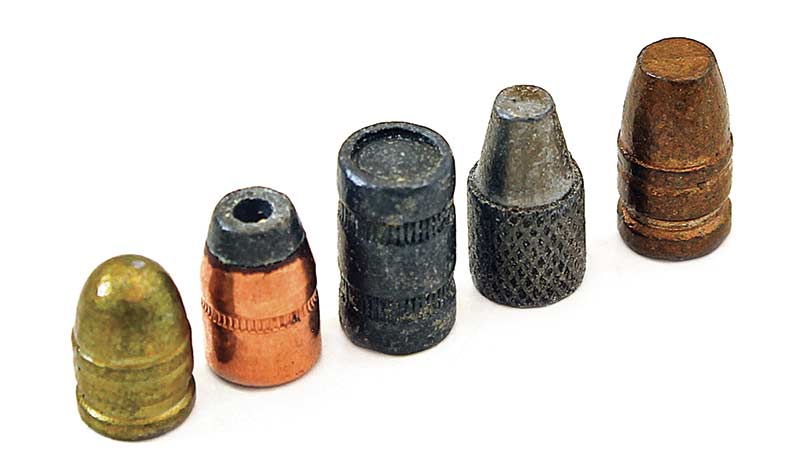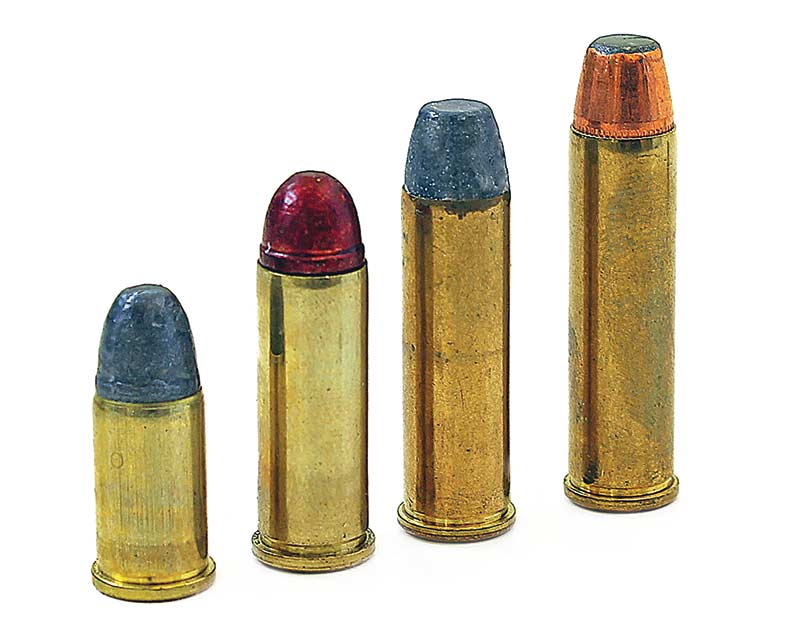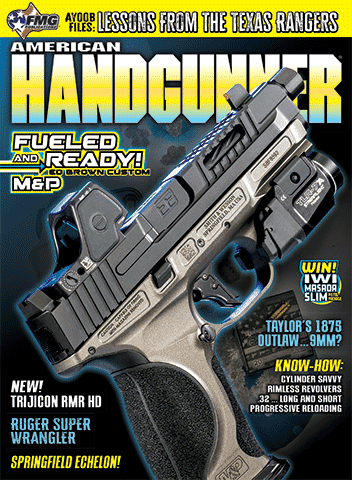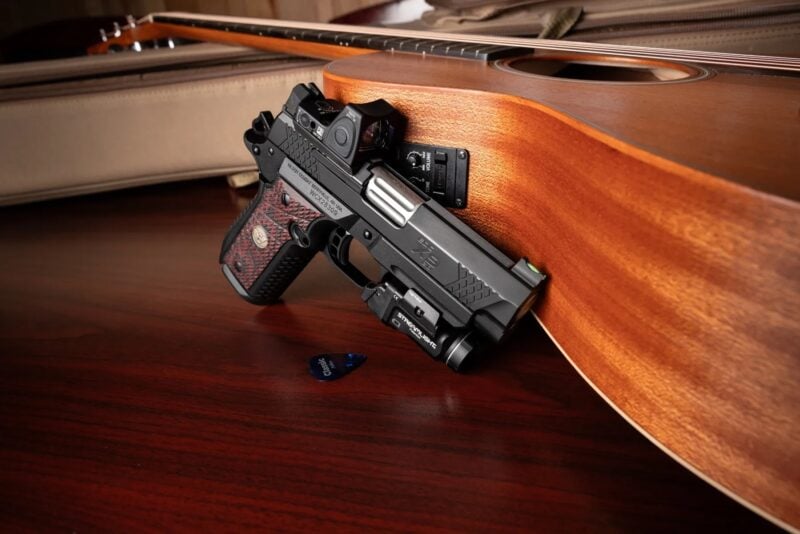The Long and Short…
Of the .32 Cartridge Family
Certain cartridges are beloved for good reason. Consider the 9mm: While it’s over 100 years old, it offers adequate power and good accuracy without being overwhelming to the novice. Additionally, just about every shooter will come to own a firearm chambered in .22 LR, at which point they’ll join a club of devotees who love the affordability and utility rimfire guns provide.
Oppositely, if there were a Rodney Dangerfield award offered to a particularcaliber, it would go to one of the oft-marginalized .32 family of cartridges. As the late comedian might say, “Let me tell ya: They don’t get no respect at all.”
This is a shame, to put things mildly! Just as a .357 revolver can safely fire .38 special rounds, so too can a .32-caliber revolver fire any round in the family shorter than its designated chambering. Additionally, I’d argue each of the four cartridges — the .32 S&W “Short,” the .32 Long, the .32 H&R Magnum, and the .327 Federal — has something to offer today’s shooter. When you put them all together, the versatility is unmatched.
Today, let’s look at the growth of the .32 family, literally and figuratively.
The .32 S&W
It all begins with a cartridge invented in 1878, meaning the diminutive “.32 short” is older than automotive mufflers, contact lenses and ballpoint pens. Though it was first chambered in Smith and Wesson’s “Model one-and-one-half,” it’s best associated with the company’s top-break Safety Hammerless model — as well as just about all of that gun’s imitators, including Iver Johnson, H&R, and too many Belgian clones to name. The .32 short was also a popular caliber for many turn-of-the-century derringers.
By anyone’s standards, the cartridge is antiquated and anemic, pushing an 80-grain bullet at about 700fps. (Allegedly. Out of many short barrels, it’s probably closer to 550 or 600 fps.) This was the quintessential “card table distance” round, and it was barely adequate at that task. As a morbid piece of historical trivia, President McKinley was laid low thanks to two rounds of an assassin’s .32 S&W, though most doctors would argue the resultant gangrene did the heavy lifting.
Surprisingly, the .32 S&W is still obtainable today as a special-order cartridge, thanks largely to the millions of .32 top break revolvers still floating around (and their owners, who are always morbidly curious as to what kind of accuracy they can wrangle out of these old guns).
I certainly wouldn’t trust a .32 short to stop a charging elephant, but surprisingly enough, they do have utility in 2023. This is the lowest recoiling centerfire cartridge of which I am aware. Out of a S&W K-Frame or GP-100, it’s comically sedate, which makes it perfect for shooters very young, very old, or for those who are otherwise extremely recoil averse. If you want a round that positively removes fear and apprehension from a new shooter, the .32 short is an excellent choice.
The .32 S&W Long
Without a doubt, playing around with the .32 Long was my own “gateway drug” to the .32 family, and I’d recommend a newcomer start here. I found myself in the possession of a few S&W I-Frames: This was the company’s predecessor to the J-Frame, a gun that defined the “.38 snub.”
If you’ve never thought a tiny gun could be accurate, get yourself a .32 caliber I-Frame immediately. I have shot better with my little .32 than I have with many .22s, and it’s not hard to understand why: Recoil is minimal. With just a little more oomph than a .22, the .32 Long avoids the “toy gun” feel that leaves many nonplussed about rimfire firearms, though the lack of bite and snarl allows pistoleros of all ages and skill levels the ability to shoot as long as they wish.
European shooters have their own love affair with the .32 Long. In fact, a bewildering number of exquisite, Olympic-grade target pistols are chambered for the cartridge. Ballistically, most loads peter out just past the 50-yard line, but within that distance, the round can offer the right shooter a winning edge thanks to its shootability and inherent accuracy.
Additionally, quite a few knowledgeable hunters have extolled the .32 Long as a superb small game cartridge. It’s a little more reliable than a .22 (both in terms of humane killing power and ignition, thanks to a centerfire primer), and it doesn’t tend to destroy much meat. Squirrels and jackrabbits beware!
The .32 H&R Magnum
While the smaller .32s had their moments in the sun over the last century and a quarter, the .32 H&R (i.e., the “.32 Mag”) is easily the most maligned of the group. As the story goes, the round was designed for the more, “ahem,” economical H&R revolvers that lacked the metallurgical strength of Smiths or Colts. As such, its relatively modest SAAMI pressure ceiling of 21,000 CUP hamstrings its performance. Officially, the standard .32 H&R load will propel an 85-grain projectile at about 1,100 fps, though hotrodders have bumped those velocity numbers by a few hundred in guns capable of handling the extra pressure.
On its own merits, the cartridge is a superb Goldilocks round. It has enough power to be pressed into a self-defense role, but has less muzzle rise than a .38 Special. When it fuels a range day, the .32 Mag makes for a flat shooting and very accurate round that’s still easy on the hands and ears of the shooter. Whether for fun or serious business, the .32 Mag offers palpable performance over the .32 Long without much additional noise or recoil.
Good luck finding either the guns or the cartridges on store shelves, though; the list of revolvers specifically chambered in “.32 Magnum” is exceedingly short, and what few models exist are often bid into the stratosphere by collectors. Worse yet, demand for the family’s middle child is destined to remain low, especially when many feel the .32 Mag lives in the shadow of its biggest brother.
The .327 Federal
Having cut my teeth on the other .32s, it was only a matter of time before a GP-100 in .327 Federal ended up in my possession. The cartridge is the latest and longest iteration of the caliber family, and it puts up some impressive numbers: The textbook factory load propels a 100-grain bullet at 1,500 fps. Talk about flat shooting!
Essentially, the .327 was created to fulfill a very particular niche: Its smaller diameter allows just about every manufacturer to fit an additional round in a revolver cylinder. Thus, the snub nose shooter gets six shots to solve his or her problems instead of five, while the owners of full-sized revolvers like Ruger’s GP-100 find their sixguns transformed into seven-shooters. Ruger’s Blackhawk in .327 Federal does one better and stuffs 8 rounds into the cylinder.
Performance-wise, the .327 will shoot about like a +P .38 Special but offers terminal performance closer to the .357 Magnum. Ballistic testing of the .327 Federal has shown it to be a truly excellent round for self-defense — particularly out of snubbies, where the round retains impressive velocity and expansion characteristics even with less than 2″ of barrel to work with.
There’s no such thing as a free lunch. The .327 operates at more than twice the pressure of the .32 Magnum (45,000 psi vs. 22,000 psi), meaning it’s loud. Additionally, expect stickier brass and more difficult extraction if, like me, you go a little longer between cleaning sessions or if you shoot other members of the .32 family through the gun. The extra pressure really seems to smoosh fired cases into any debris left in the cylinders.
Additionally, bear in mind the .327 Federal is frequently paired with very small, very light guns. Remember: These are purpose-driven tools! While a tiny revolver in .327 may be more manageable to shoot than one chambered in .357 Magnum, I still wouldn’t expect it to be particularly “fun” when it’s screaming out of a 17-oz. platform.
Versatility Defined
While the .327 Federal gained quick accolades from gun writers and other industry types, it’s a shame the general public hasn’t responded with similar love and affection — at least so far. With any newly introduced cartridge, there’s always a Catch-22: Firearm manufacturers don’t want to make guns in a caliber nobody’s heard of, and ammunition manufacturers need to know there’s a broad base of new gun owners ready to buy their wares.
As a result, choices of revolvers in .327 Federal are fewer than I’d like. In the same breath, I think reloaders are a little more poised to capitalize on the strengths of the .32s than those buying factory ammo — that’s not to say it can’t be done for one lacking presses, projectiles and powder; it’s just going to take some serious shelf hunting.
However, if a person is lucky enough to find and feed a .327 Federal or .32 Magnum revolver, they’ll have a true “do it all” gun. With just a few different boxes of ammo, one platform can be used to train a young shooter, dispatch small game, punch paper, and defend life and limb. While it might seem like this is one of those “Jack of all trades, master of none” situations, the truth is a gun like my Ruger GP-100 or S&W 16-4 handles all of these disparate jobs remarkably well!
I’ll leave you with this: It’s said that friends are the family you choose. Supposing you choose to explore the .32 cartridge family, it’s very likely you’ll find a lifelong range companion you had no idea you were looking for!

